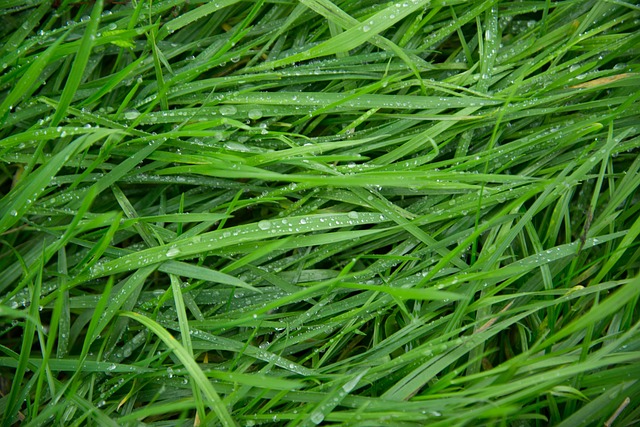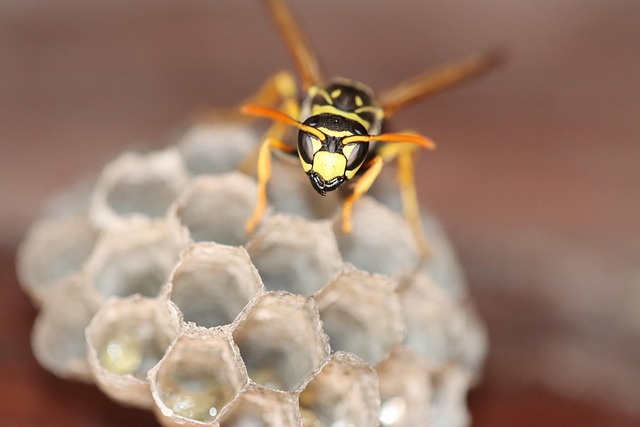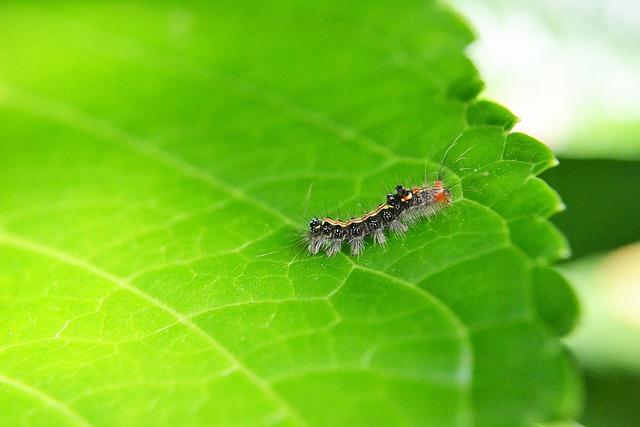Traditional chemical pesticides pose severe environmental and health risks, prompting businesses to adopt Eco-Friendly Pest Control solutions. These natural, non-toxic methods leverage predators, biological agents, and innovative technologies to target pests safely. Benefits include improved air quality, reduced ecological damage, enhanced corporate reputations, and long-term cost savings. Popular eco-friendly tactics use essential oils, boric acid, and plant-based insecticides. Businesses can implement these strategies through inspections, prevention, natural repellents, monitoring, and collaboration with certified green providers. Successful case studies demonstrate the environmental and business advantages of Eco-Friendly Pest Control, positioning it as a vital component of sustainable practices.
In today’s environmentally conscious world, businesses are increasingly seeking eco-friendly pest control solutions. This article delves into the shift from traditional, potentially harmful methods to sustainable, green alternatives. We explore the understanding of conventional pest control and its environmental footprint, highlighting the rising demand for eco-friendly options. The piece offers insights on benefits, common pests and organic remedies, implementation strategies, inspiring case studies, and future trends in eco-friendly pest management. Embrace a greener approach to pest control with these comprehensive solutions.
Understanding Traditional Pest Control and its Environmental Impact

Traditional pest control methods often rely on synthetic chemicals, which can have detrimental effects on both the environment and non-target organisms. These chemicals can contaminate soil, water sources, and air, leading to ecological imbalances and potential health risks for nearby communities. Additionally, they may kill beneficial insects and other wildlife, disrupting local ecosystems. Understanding these impacts is crucial when considering more sustainable alternatives, especially in commercial settings where environmental stewardship is increasingly important.
Businesses are now seeking eco-friendly pest control solutions as a responsible approach to managing pests without compromising ecological health. Eco-friendly methods utilize natural predators, biological agents, and non-toxic chemicals to target pests effectively while minimizing harm. This shift towards sustainability not only benefits the environment but also contributes to creating healthier work spaces for employees and customers.
The Rise of Eco-Friendly Pest Management: A Sustainable Approach

In today’s world, where environmental consciousness is on the rise, businesses are increasingly seeking eco-friendly pest management solutions. The traditional chemical-laden pest control methods have long been a concern for both business owners and ecologists alike. As such, there’s a growing demand for sustainable alternatives that effectively manage pests without compromising the health of employees or the environment.
Eco-friendly pest control offers a promising approach by leveraging natural methods, biological agents, and innovative technologies to combat pests. This shift not only reduces the environmental impact but also provides long-term benefits such as improved indoor air quality, minimized ecological disruptions, and enhanced reputation for businesses committed to sustainability.
Benefits of Choosing Green Pest Solutions for Businesses

Choosing eco-friendly pest control solutions offers numerous benefits for businesses. Firstly, it minimises the use of harmful chemicals, ensuring a safer work environment for employees and customers alike. This is particularly advantageous in food service industries or places where people gather frequently. Green pest control methods are also more sustainable, as they focus on natural predators, plants, and non-toxic substances to eliminate pests. By adopting these solutions, businesses can reduce their ecological footprint and contribute to a healthier environment.
Moreover, eco-friendly pest management can be cost-effective in the long term. Traditional chemical treatments may require frequent applications, leading to recurring expenses. In contrast, green methods often provide prolonged protection with fewer repetitions, saving money over time. Additionally, these solutions can help maintain a positive brand image as consumers increasingly prefer environmentally conscious businesses. This trend aligns with the growing demand for sustainable practices across various sectors.
Common Pests and Their Organic Remedies

Many businesses face the challenge of pest infestations, but there’s a growing trend towards adopting eco-friendly solutions for their commercial spaces. Common pests like ants, roaches, and mice often invade offices, warehouses, and retail stores, requiring effective yet sustainable methods for control. Organic remedies offer a greener alternative to traditional chemical pesticides, with natural ingredients that are safe for both people and the environment.
For instance, essential oils such as peppermint, lemongrass, and cinnamon have powerful scents that repel pests naturally. Sprays or diffusers infused with these oils can create an inhospitable environment for ants, roaches, and other intruders. Similarly, boric acid, a natural mineral, is effective in powder form to deter pests without leaving harmful residues. These eco-friendly methods not only promote a healthier workplace but also contribute to long-term sustainability goals for businesses.
Implementation Strategies: Adopting Eco Pest Solutions in Your Commercial Space

Implementing eco-friendly pest control solutions in your commercial space is a strategic decision that goes beyond just eliminating pests; it’s about adopting sustainable practices that protect both your business and the environment. Start by conducting a thorough inspection to identify potential entry points for pests, then focus on prevention through sanitation and sealing off access areas. Integrate natural repellents like essential oils or plant-based insecticides, which are not only effective but also pose fewer risks to human health and local ecosystems compared to traditional chemical pesticides.
Regular monitoring and early detection are key to successful eco pest management. Establish a consistent inspection routine to identify any signs of pests early on, allowing for swift action using targeted, non-toxic methods. Collaborate with reputable eco-conscious pest control providers who adhere to industry best practices and use certified green products. By integrating these strategies, businesses can effectively manage pests while promoting a healthier, more sustainable working environment.
Case Studies: Successful Eco Pest Control Transformations in Business Settings

In the business world, transitioning to eco-friendly pest control methods has become a game-changer for many companies aiming to reduce their environmental impact. Case studies from various industries showcase successful transformations where traditional chemical-heavy pest management was replaced with more sustainable alternatives. For example, a retail chain known for its commitment to sustainability swapped toxic insecticides with natural repellents and biological controls, leading to a significant reduction in pests and a positive public image boost.
Another notable case involves a major hospitality group that implemented eco-friendly practices across its portfolio of hotels. By adopting integrated pest management (IPM) strategies, including regular monitoring, sanitation, and the use of non-toxic traps, they effectively controlled pest populations while adhering to their green initiatives. These real-world examples demonstrate that embracing eco-friendly pest control not only benefits the environment but can also enhance a business’s reputation and attract environmentally conscious customers.
Future Trends: Innovations in Eco-Friendly Pest Management

The future of pest management is bright and green as businesses increasingly seek sustainable solutions to minimize environmental impact. Innovations in eco-friendly pest control are leading the way with advanced technologies and natural methods gaining popularity. For instance, the integration of smart sensors and data analytics allows for precise monitoring of pest activity, enabling targeted and timely interventions without resorting to harsh chemicals.
Additionally, biopesticides and beneficial insects are being harnessed for their specific pest-control abilities, offering a safer and more environmentally conscious approach. These trends signal a paradigm shift towards a greener, healthier, and more sustainable business environment, where eco-friendly pest control is not just an option but a responsibility.
